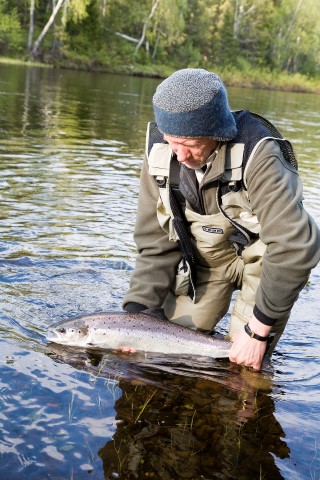The European Commission has released its proposal for 2023 fishing opportunities in the Baltic sea. The proposal defines the total allowable catches levels (TACs) for several species in this sea basin such as herring, plaice and sprat species as well as cod and salmon for which EAA had shared recommendations with policy-makers concerning recreational and commercial fishing opportunities.
Baltic cod
For Baltic cod, no more than one specimen may be retained per recreational fisher per day in subdivisions 22 and 23, and in subdivision 24 within six nautical miles measured from the baselines (Western Baltic cod). This is in line with the EAA members’ recommendations to contribute to the recovery of the stock while preserving some fishing opportunities for recreational fishers. A closure is proposed between 15 January to 31 March for recreational fisheries in these areas.
Recreational fisheries of cod shall be prohibited in subdivision 24 beyond six nautical miles measured from the baselines, and in subdivisions 25 and 26 (Eastern Baltic cod).
Due to the fragility of the stocks, the Commission agreed to establish “accompanying measures”, such as spawning closures and restrictions for recreational fisheries.
The European Anglers Alliance (EAA) welcomes fishing restrictions for cod in spawning areas, including commercial fisheries (unless few exceptions). Nevertheless, anglers stand for alternative and more efficient management measures, such as the introduction of a maximum landing size to protect the so-called “super spawners”, as well as increasing the existing minimum landing size.
At the same time, further and more accurate measures should be applied to commercial fisheries, such as the improvement and obligatory use of selective gear with the purpose of reducing their bycatch of cod. Regarding the TAC levels for Western Baltic Cod, the Commission expressed caution by maintaining the proposed TAC levels limited to unavoidable by-catches, at 489 tonnes.
Read here the EAA Position paper on Western Baltic cod fishing in 2023
Baltic Salmon
For Salmon, the general provision is that
“recreational fisheries of salmon, including catch-and-release fishing of salmon, shall be
prohibited in subdivisions 22 to 31. Any specimen of salmon accidentally caught shall be released back into the sea immediately”.
The EAA regrets that this general provision includes a blanket prohibition of catch and release.
However, the Commission’s proposal includes some
derogations provided that the following cumulative conditions are gathered:
- No more than one specimen of adipose fin-clipped salmon may be caught and retained per recreational fisher per day. This is not in line with one of the European Anglers Alliance (EAA) proposals: EAA supports a bag limit of one salmon (wild or stocked) per day per angler south of latitude 59.30 N but does not agree with the proposal of one fin clipped salmon as this measure is not based on an appropriate mortality study of released Baltic salmon.
- All specimens of any fish species retained shall be landed whole. Even though EAA considers that this should only apply to salmonids (salmon and sea trout), it does not seem to be justified for other species, such as pike, perch and pikeperch.
EAA also considers that r
ecreational trolling north of 59.30 N should be subject to member state regulation and not be unnecessarily regulated by a 4 nm boundary.

Concerning the commercial fisheries opportunities, and based on the ICES advice, the Commission agreed to maintain the TAC as in 2022 and all the “accompanying measures from the 2022 fishing opportunities”. This means that the TACs for the main Basin Salmon and the Gulf of Finland Salmon remain respectively at 63811 and 9455 specimens.
EAA members had called for a strong management of salmon in the Baltic Sea region due to a shared analysis with ICES that the existing current management involves a risk for extinction of several weak river salmon stocks. Particular attention must be paid to migration obstacles caused by hydropower plants and lack of spawning habitats (among other causes).